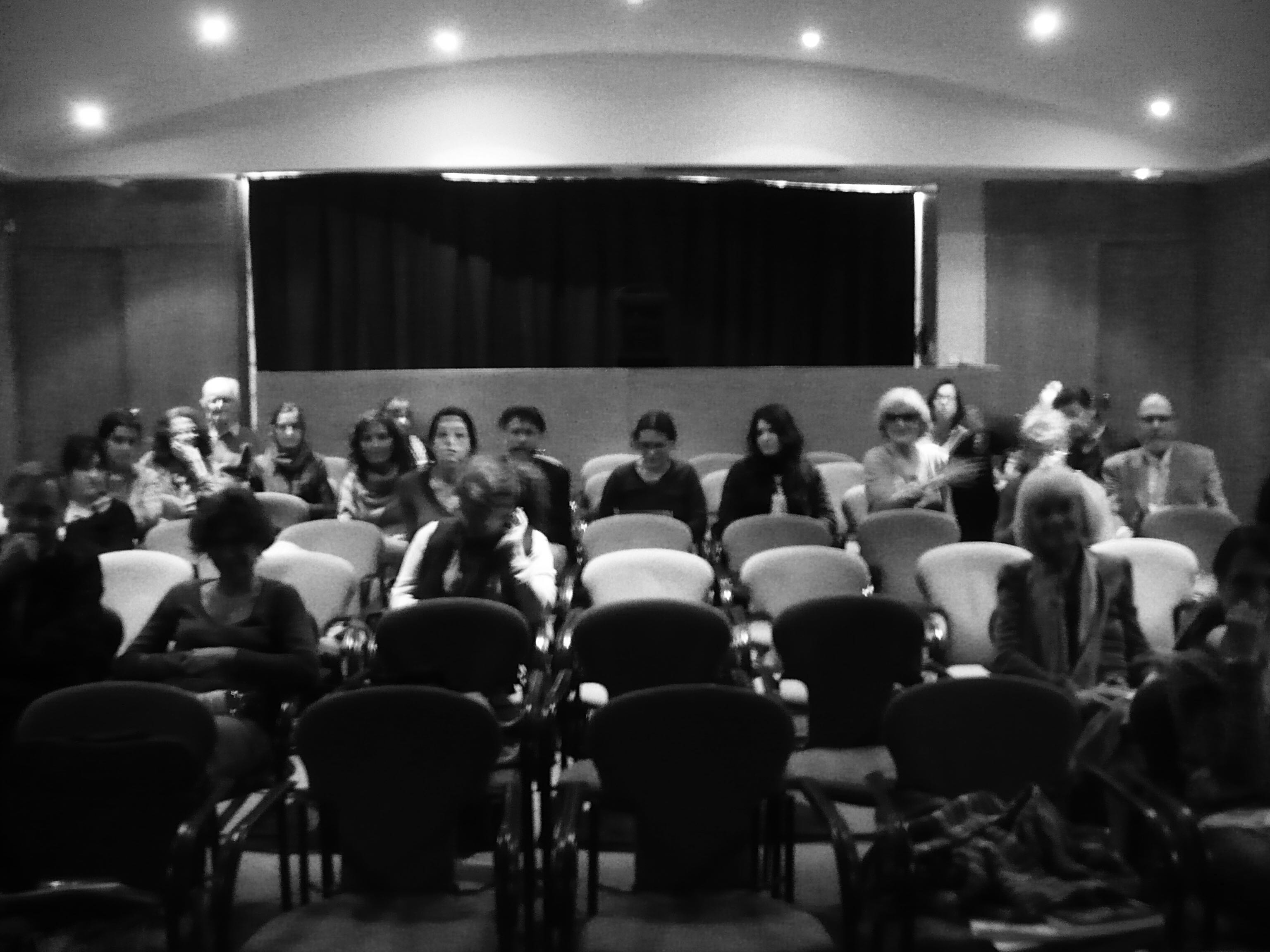I cut from Chapter 5 a description of the philosophy conference I attended at Céret.

The conference room was on the upper floor of the Céret Museum of Modern Art. It had cherry paneling, gray carpets, and seven rows of poorly padded chairs. The presenters faced the audience from a low platform. The audience sprawled out across the chairs, their bodies unruly and undisciplined. Their clothes tended to be presentably decorous. They faced the speakers in a normative show of attention, heads inclined, tilted or bent, and showed respect by only occasionally whispering during the talks. It was ritual behavior, in a ritualized space.
The conference entailed a specific protocol of interaction, set apart from other social rhythms. The conference room was a space apart; the time of the conference was a time apart. In Céret, the fluid, occasionally drowsy, quietly attentive time of the conference moved rhythmically through its published schedule with only minor deviations. The motionless space could have been any conference space anywhere, bereft of overt signs of locality. The room cut us off from the nearby art galleries, from the rest of the town, from natural light and the landscape, and from the everyday life of our home universities. The room enclosed us within a space of respect, of form, of recognition and obligations.
Yet even within the conference ritual, with its set schedule and formal rhythm of introductions, presentations, and questions, there was still a great deal of indeterminacy. No one could be sure what a given presentation would be like, how the conversation would go, whether anyone would pay attention. Sometimes there was a low-grade form of verbal aggression, a historically masculine practice of testing others and being tested. The speakers’ performances were subject to immediate judgment from others. This was largely what gave the conference its anxiety-making potential.
We heard presentations about the novelist Roberto Bolaño, about the philosophical implications of John Cage, about the expression “…or death” (as in “liberty or death”), about “nature-artifice“ in Rousseau. The speech would begin, we would listen. At odd moments there would be a shifting in the room, as if people were bored, confused or sleepy. As if they felt inclined to whisper to each other during a speaker’s momentary pause. Each conference talk was followed by time for questions to the speaker, but the questions seldom amounted to full syntheses of what had been said in the presentations. The dialogue, on the contrary, was often fragmentary. It felt to me that the scenes of discussion traveled like a dream. People came and went; the audience shrank sometimes when the doctoral students spoke.
Here are a few questions and comments that struck me as I listened to the talks. “What does one gain by introducing “artifice” in lieu of “technique?” “I would have been more critical with the conception of the border as a line protecting an entity.” “A logical question: when you speak of liberty or death, do you mean the exclusive ‘or’ or the inclusive ‘or’?” (The saucy response: “I’m not going to respond to that, of course.”) “What exactly is a smoking mirror?” “Is Leroux marginal or anti-institutional, or are there [instead] competing institutional projects for philosophy at that [19th-century] moment?” After Marcel’s talk, someone asked him about “the writer as shadow,” but he declined to answer, saying only that the question was “exciting.” At another moment, a presenter’s effort to sum up “the meaning of Hegel’s Phenomenology” elicited laughter among the crowd, since the topic seemed so vast. Douailler laughed loudest, as if he were the agent of the crowd’s affects.
It became clear to me that the conference was not an ideally rational public space where every claim was reliably received and systematically debated by the group. I wrote as much in my notes the first afternoon.
One realizes that it’s impossible for anyone to retain all this knowledge, and one has to have an analyze of waste-knowledge and excess of epistemic form and content. As if the epistemic content of the colloque was an unmasterable form, a form of untranscendable excess. It’s knowledge made to be mostly lost, made to be redundant, to offer many points of entry — and of exit.
[Fieldnotes, March 25, 2011]
When I asked a female professor what she made of the conference, she described it less as a scene of learning than as a scene of networking. “I need to re-read my notes to make sense of it all,” she said, “since each talk erases the last one in my head. I’m happy to present, to get to connect with the director of the Museum. I’ll come back here at some point…” As the scattered remarks mentioned above show, I did no better than her at retaining the sum content of what was said. I strongly suspect that no one else did, either. The conference was a banquet of words, an exercise of deliberate indulgence and splendor. It seemed to be centered around the production of waste knowledge, knowledge that was so broad in scope and so intricate in form that it became unmasterable, a non-integrable excess. No one could take in all this knowledge. But in the end, the conference was less about transmitting knowledge than about making sparks of thought and giving each other glimmers of recognition.